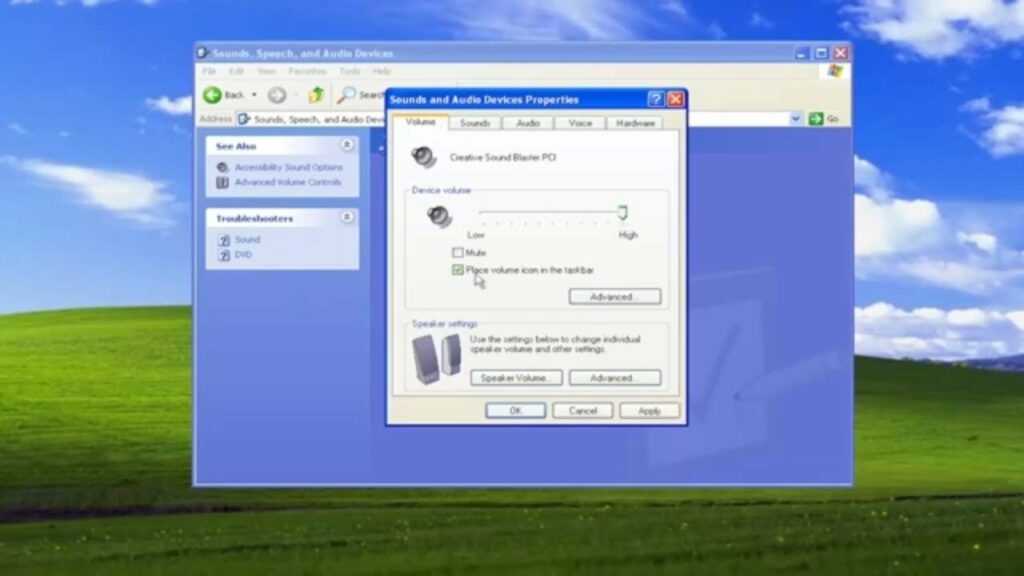Unraveling the Symphony: A Comprehensive Guide to Troubleshooting Sound/Audio Issues in Windows XP

Introduction:
Sound/audio issues in Windows XP can be frustrating and disruptive, affecting everything from multimedia playback to communication applications. Whether encountering no sound output, distorted audio, or intermittent interruptions, troubleshooting these issues requires patience, knowledge, and systematic troubleshooting techniques. In this extensive guide, we’ll delve deep into the intricacies of troubleshooting sound/audio issues in Windows XP, providing users with a comprehensive toolkit to diagnose and resolve common audio problems with precision and confidence.
Understanding Sound/Audio Issues in Windows XP:
Before delving into troubleshooting methods, it’s crucial to understand the underlying causes of sound/audio issues in Windows XP. These issues can stem from various factors, including hardware malfunctions, driver conflicts, software glitches, and incorrect system settings. By identifying the root cause of the problem, users can implement targeted solutions to resolve sound/audio issues effectively and restore normal audio functionality to their Windows XP systems.
Step-by-Step Guide to Troubleshooting Sound/Audio Issues:
Now, let’s embark on a systematic journey to troubleshoot sound/audio issues in Windows XP:
Step 1: Check Physical Connections and Hardware:
- Ensure that speakers or headphones are properly connected to the audio output jack on your computer.
- Verify that the volume control on your speakers or headphones is turned up and not muted.
- If using external speakers, check the power source and ensure they are powered on.
- Inspect the audio cables for any signs of damage or wear and replace them if necessary.
- Test the speakers or headphones on another device to determine if the issue is with the audio output device itself.
Step 2: Verify System Volume and Mute Settings:
- Click on the “Start” button and navigate to “Control Panel.”
- Open the “Sounds and Audio Devices” or “Sound and Audio Devices” icon.
- In the “Volume” tab, ensure that the volume slider is not set to the lowest level and adjust it if necessary.
- Check the “Mute” checkbox to ensure that audio is not muted and uncheck it if necessary.
- Click on the “Apply” and “OK” buttons to save the changes.
Step 3: Update Audio Drivers:
- Right-click on the “My Computer” icon and select “Properties” from the context menu.
- In the System Properties window, navigate to the “Hardware” tab and click on the “Device Manager” button.
- Expand the “Sound, video and game controllers” category to view installed audio devices.
- Right-click on the audio device and select “Update Driver” from the context menu.
- Follow the on-screen prompts to search for and install updated drivers from the manufacturer’s website or Windows Update.
Step 4: Restart Windows Audio Service:
- Press the “Windows” key + “R” to open the Run dialog box.
- Type “services.msc” into the Run box and press Enter to open the Services window.
- Scroll down the list of services and locate the “Windows Audio” service.
- Right-click on the “Windows Audio” service and select “Restart” from the context menu.
- After restarting the service, check if audio functionality has been restored.
Step 5: Run Sound Troubleshooter:
- Click on the “Start” button and navigate to “Help and Support.”
- In the Help and Support window, type “sound troubleshooter” into the search box and press Enter.
- Follow the prompts of the Sound Troubleshooter to diagnose and resolve common sound/audio issues automatically.
Advanced Techniques and Tips:
For advanced users or those encountering persistent audio problems, consider the following techniques and tips:
- Check for System Updates: Ensure that Windows XP is up-to-date with the latest service packs, patches, and updates from Microsoft.
- Disable Audio Enhancements: In the Sound settings, disable any audio enhancements or special effects that may be causing compatibility issues.
- Test Audio in Safe Mode: Boot Windows XP into Safe Mode and test audio functionality to determine if third-party software or drivers are causing conflicts.
- Reinstall Audio Drivers: If updating drivers does not resolve the issue, consider uninstalling and reinstalling audio drivers to address potential corruption or conflicts.
- Consult Manufacturer Support: If all else fails, contact the manufacturer of your computer or audio device for further assistance and troubleshooting guidance.
Conclusion:
In conclusion, troubleshooting sound/audio issues in Windows XP requires a systematic approach, patience, and a thorough understanding of the underlying causes. By following the step-by-step guide outlined in this article and considering advanced techniques and tips, users can diagnose and resolve common audio problems effectively, restoring normal audio functionality to their Windows XP systems. Whether checking physical connections, updating drivers, or running diagnostic tools, mastering the art of troubleshooting sound/audio issues empowers users to enjoy uninterrupted audio experiences and maximize productivity on their Windows XP computers. So dive into the world of audio troubleshooting today, unravel the symphony of sound, and restore harmony to your Windows XP system with confidence and precision.




